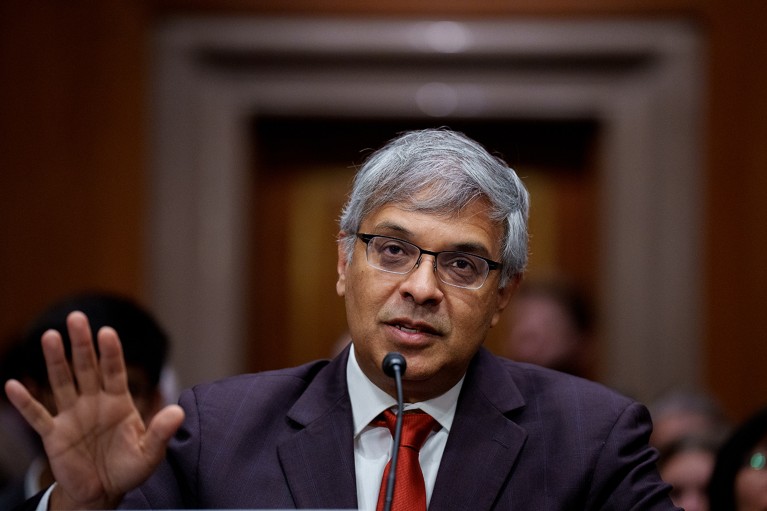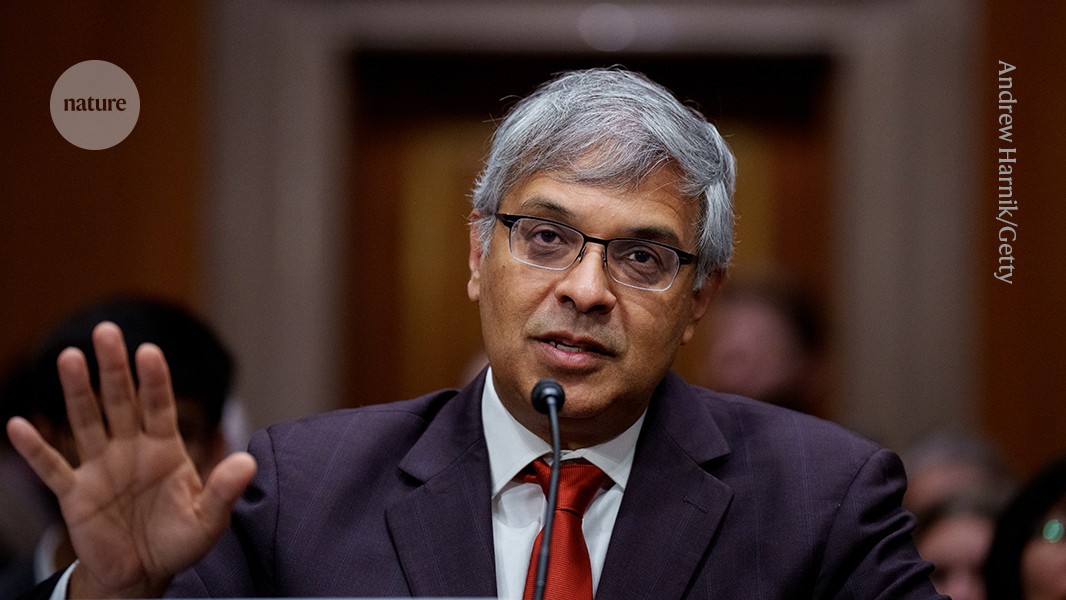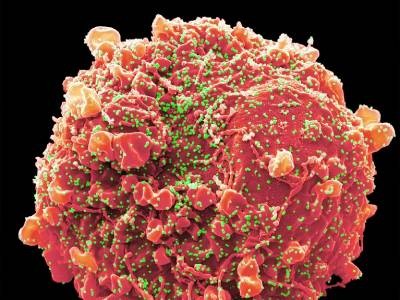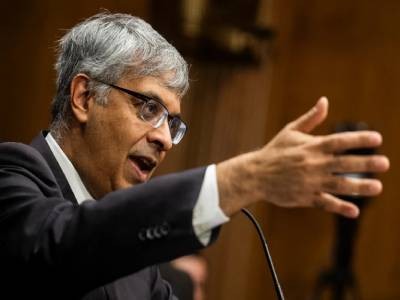
Jay Bhattacharya took office as director of the US National Institutes of Health on 1 April.Credit: Andrew Harnik/Getty
On health economist Jay Bhattacharya’s first day as head of the US National Institutes of Health (NIH), the chiefs of four of the 27 institutes and centres that make up his agency — including the country’s top infectious-diseases official — were removed from their posts. The unprecedented move comes amid massive cuts to research at the NIH.
The directors of the National Institute of Allergy and Infectious Diseases (NIAID), the National Institute of Child Health and Human Development (NICHD), the National Institute on Minority Health and Health Disparities (NIMHD) and the National Institute of Nursing Research (NINR) were informed late on 31 March that they were being placed on administrative leave. Together, these leaders were in charge of US$9 billion in funding at the NIH.
Exclusive: NIH to cut grants for COVID research, documents reveal
At least some directors were offered reassignments to the Indian Health Service, a division of the US Department of Health and Human Services (HHS) that provides medical care to Indigenous people living in the United States. (The HHS is the parent agency of the NIH.) “HHS proposes to reassign you as part of a broader effort to strengthen the Department and more effectively promote the health of the American people,” reads an e-mail to the directors that Nature has obtained. “This underserved community deserves the highest quality of service, and HHS needs individuals like you to deliver that service,” it says, offering reassignment to locations such as Alaska, Montana and Oklahoma.
These large-scale reassignments are unheard of for the NIH, the world’s largest public funder of biomedical research: although the director of the NIH and the director of one of its institutes, the National Cancer Institute, are political appointees chosen by the US president, the other 26 directors of the NIH’s institutes and centres are not typically replaced when presidential administrations change. (NIMHD director Eliseo Pérez-Stable, for example, had been in his role for nearly 10 years, under three different US presidents.) But US President Donald Trump, who took office in January, has not been following the norms of past administrations during his second presidency.
“This will go down as one of the darkest days in modern scientific history in my 50 years in the business,” says Michael Osterholm, an infectious-diseases epidemiologist at the University of Minnesota in Minneapolis. “These are going to be huge losses to the research community.”
When asked for a response, the NIH directed Nature to the HHS for comment. The NIH’s top communications officer, Renate Myles, was also placed on administrative leave, according to an agency staff member, who requested anonymity because they were not authorized to speak with the press. The HHS did not respond to Nature’s queries by publication time.
A consolidation of power
The removal of the directors follows an announcement last week by HHS chief Robert F. Kennedy Jr that his agency, which includes the NIH, would be reducing its workforce by 20,000 employees, or about one-quarter of its staff members. Layoffs have largely been targeted at administrative staff, but many scientists, including those that run HIV prevention programmes and research have also been affected.
Trump’s nominee for NIH chief talks frozen grants and fostering ‘scientific dissent’
The layoffs will challenge the longstanding status that the NIH’s institutes and centres have had within the agency — as semi-autonomous entities. Legislative, communications, IT and other administrative workers within each institute received termination notices early on 1 April, a move designed to consolidate power under the NIH director. “NIH will cease to function after the RIFs [reductions in force]; it will take months to get things back online administratively,” says another NIH official, who requested anonymity because they were not authorized to speak with the press.
In his first e-mail to agency staff members on 1 April, which was obtained by Nature, Bhattacharya wrote: “These reductions in the workforce will have a profound impact on key NIH administrative functions … and will require an entirely new approach to how we carry them out.”




